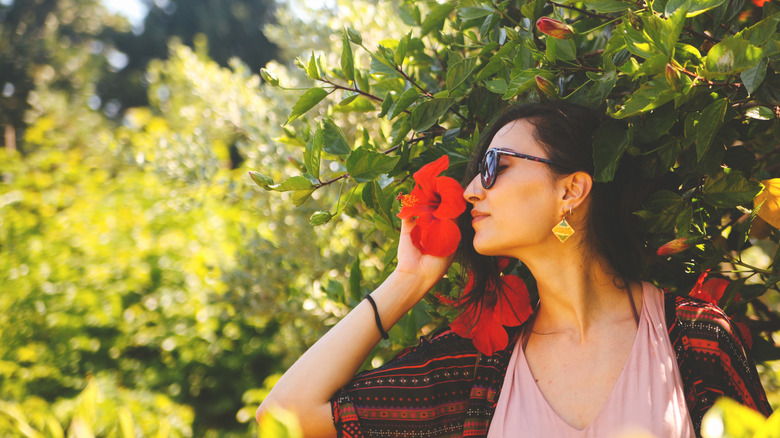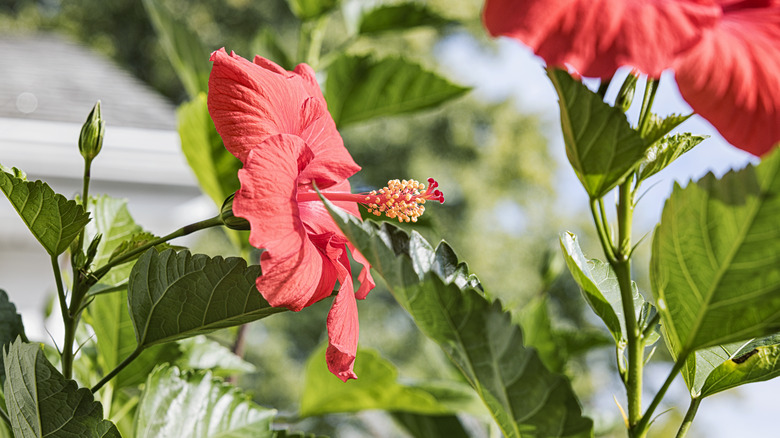Hibiscus Need Special Attention In Fall - Here's What To Check For Better Blooms
We may receive a commission on purchases made from links.
Hibiscus, especially the vibrant tropical hibiscus shrub, ranks among many gardeners' favorites for its showy big red, pink, white, or even striking blue blooms. Not to mention, hummingbirds can't resist this tropical perennial flower. Rose of Sharon (Hibiscus syriacus) can keep gardens looking gorgeous well into autumn. But if you want even better blooms on your hibiscus next year, add a few special key tasks to your fall to-do list.
For those in colder climates, autumn might be the best time to bring your potted tropical hibiscus inside. If you live in a warmer area or have a hardy hibiscus shrub outdoors, you will need to do some mulching, fertilizing, and pest control. The hardy hibiscus cultivar can survive USDA Plant Hardiness Zones 4 to 9, while tropical hibiscus will only survive a winter in zone 10, which means it'll shrivel in weather colder than 30 degrees.
If you live in zone 9 or below, and you have a tropical hibiscus in a container, then now's the time to bring that delicate shrub indoors to protect it from frost. To care for hibiscus plants indoors, set it by a bright window and give it regular doses of water, but don't overdo it and let it become waterlogged. Also, fear not if the hibiscus quickly drops all its leaves in protest after you move it inside. It's likely to recover in a sunny, warm spot.
Do this for fall care of hardy hibiscus outside
For an outdoor hibiscus shrub — whether it's a hardy variety or you live in a warmer area — the most important thing you should do is lay down a layer of mulch for insulation. Otherwise, the roots could die during a cold spell, which is bad news for flowers next spring or summer. If you get word of a particularly bad cold front on the way, use cold frost cloth or burlap to give the flowering shrubs extra protection.
Also, fall is a great time to give hibiscus one last shot of fertilizer before stopping for the winter. Hibiscus are hungry plants, so a balanced fertilizer works well. Try Jack's Classic 20-20-20 all-purpose water-soluble fertilizer. Check your hibiscus for signs of aphids – which love to munch on these plants. These pests suck sap from stems, withering leaves, and stunting flowers. To remove aphids from your shrub, simply knock them off with water from your garden hose. Then coat the plant with soapy water or just add a budget-friendly bar of soap in the garden to deter the bugs from coming back.
Now that you've got your hibiscus pest-free, mulched, and fed, give it one last thorough soaking before the ground gets harder in the cold. Then cut back on regular watering altogether. In winter, hibiscus needs less water, so make sure the top layer of soil feels dry before watering. If you bog down roots with too much water, this can damage the plant and might nix spring flowers.

